A GOOD PATRIOT IS ALWAYS CONFLICTED
Zora J Murff and Terence Washington in conversation
Zora J Murff I have been trying to find a good—maybe poignant—way of introducing this conversation. I knew I failed when I found myself googling the statistics for becoming a lightning victim. But a strike of lightning succinctly describes the short time I’ve known Terence Washington. We first met at the Silver Eye Center for Photography to discuss the medium’s role as witness and as a mirror for self-critique. That conversation carried forward, leading to him writing for At No Point In Between. We continued talking, and are both very excited to share some of it with y’all.
At No Point In Between was published by Dais Books, and was the winner of a coveted Lucie Photobook Prize in 2019. A limited number of copies are still available through the publisher.
At No Point In Between was published by Dais Books, and was the winner of a coveted Lucie Photobook Prize in 2019. A limited number of copies are still available through the publisher.

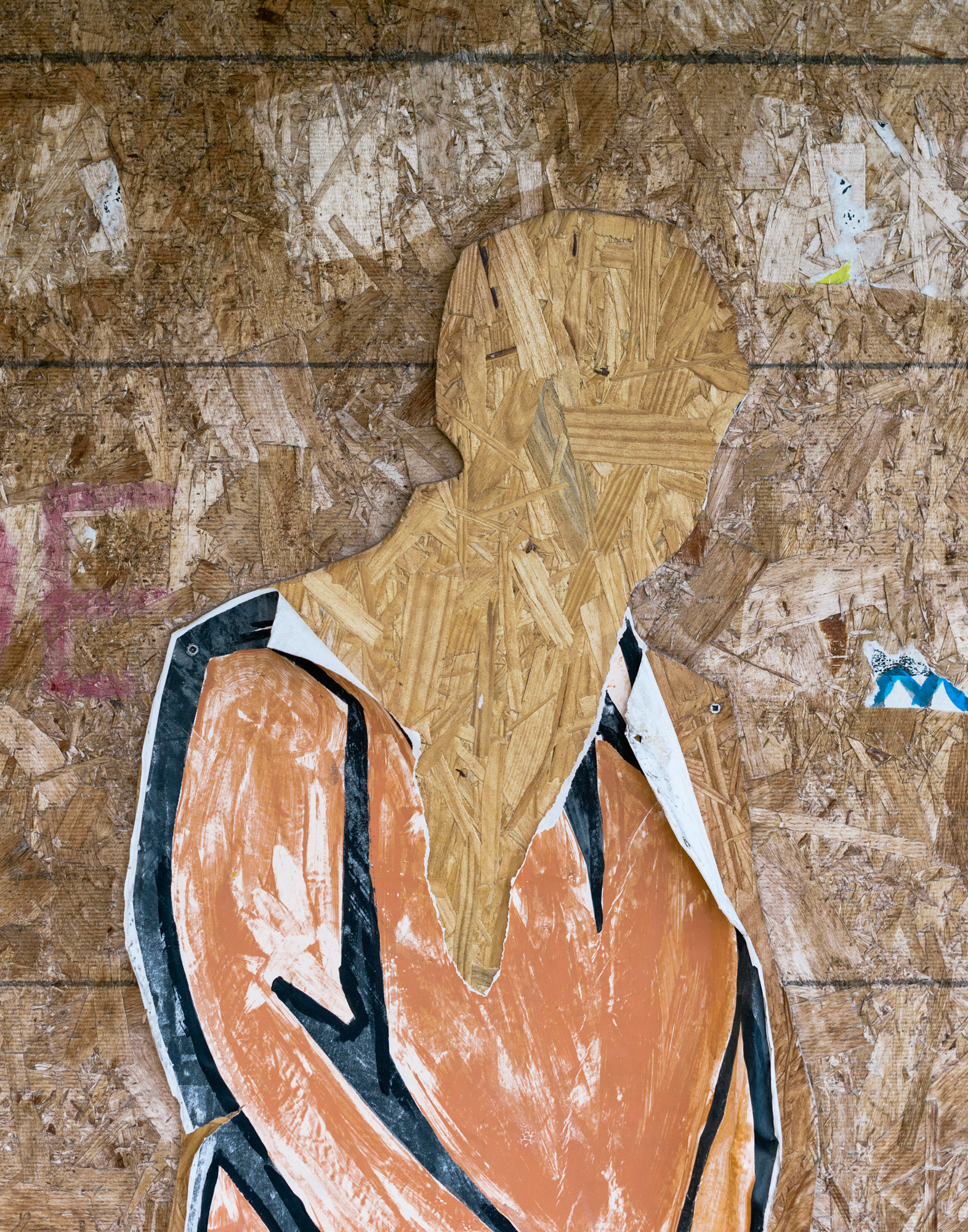

Zora J Murff, Stripped; Roses; Knight
Terence Washington What is a question that you get asked about your work that you don’t get to talk about?
Zora J Murff Recently at a portfolio review, I was showing a maquette of my book. A reviewer told me that there should be more textual information, that without it, the work was too heady or cerebral; this actually happened more than once that day.
Zora J Murff Recently at a portfolio review, I was showing a maquette of my book. A reviewer told me that there should be more textual information, that without it, the work was too heady or cerebral; this actually happened more than once that day.
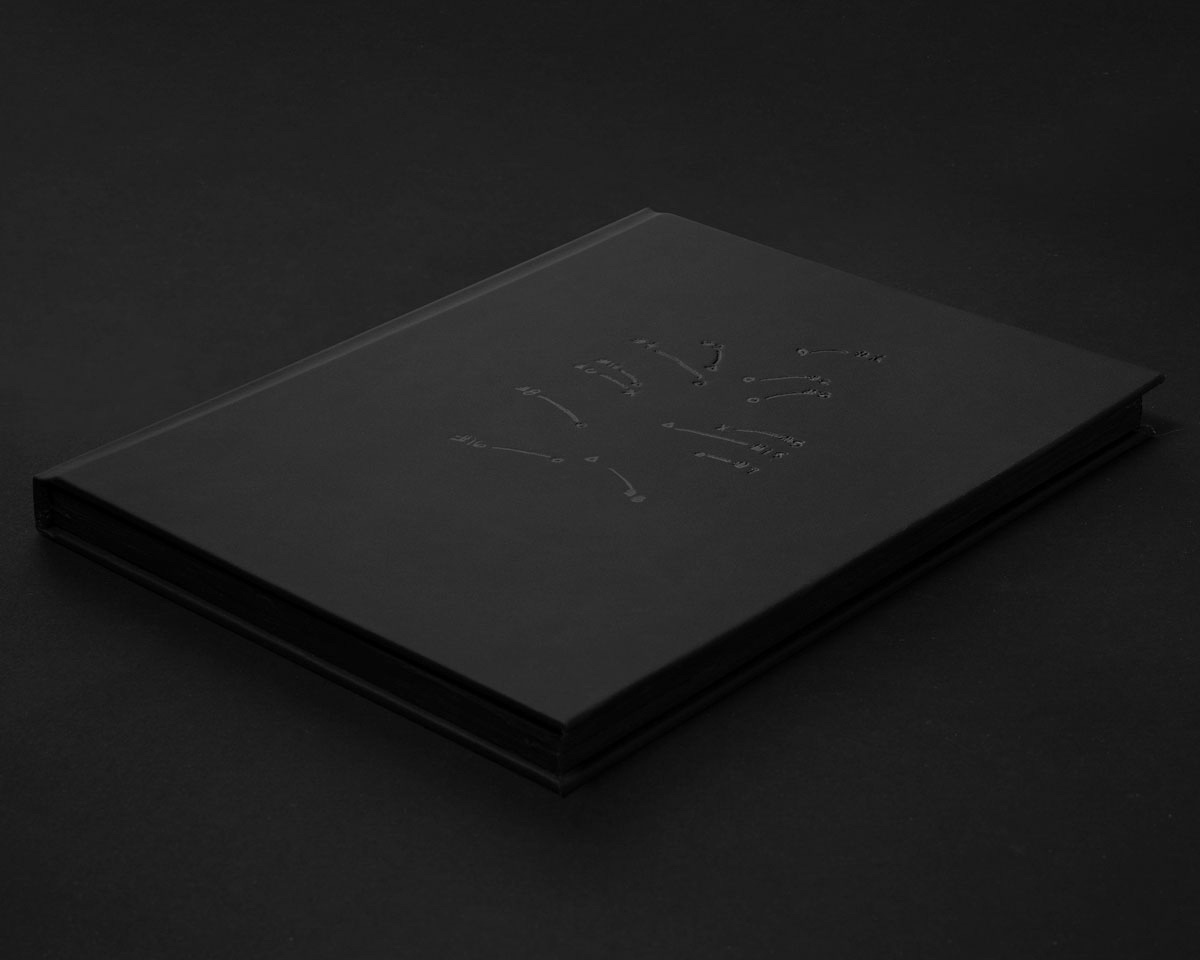



TW What do you say to that?
ZJM The work is a conversation about photography’s objectivity; how we choose to believe in images (i.e., how belief systems are found, challenged, or reinforced through imagery); how images are contextualized and politicized. My choice to make the work “cerebral” is to ask the viewer to question what they see and the emotions they feel when they see it. To me, that level of introspection is crucial when looking at images because there is always more information available if one takes the time or puts forth an effort.
ZJM The work is a conversation about photography’s objectivity; how we choose to believe in images (i.e., how belief systems are found, challenged, or reinforced through imagery); how images are contextualized and politicized. My choice to make the work “cerebral” is to ask the viewer to question what they see and the emotions they feel when they see it. To me, that level of introspection is crucial when looking at images because there is always more information available if one takes the time or puts forth an effort.
I recently wrote a lecture on representation, and I included these images in starting a broader discussion
about the persistence of ideologies garnered from imagery. Both of these examples are inspired by
Rudyard Kipling’s “The White Man’s Burden”, a poem supporting European and American imperialism and
ethnocentrism. In Kipling’s words, these “savage wars of peace” were the express way to civilize the
“unwilling barbarian,” effectively placing whiteness on a pedestal and all others underneath.
This history is quite deep, and throughout time, we have seen the many dividends paid to whiteness based on the investment in the oppression of non-white people. Imagery — and photography — has always played a role in that. Early on, I knew I wanted to wade into that discourse. However, to include a lot of textual reference to history is to begin writing a textbook, and that was never my intent. In different ways, I reference that history, but leave enough space for the viewer to do the labor (if they choose to).
This history is quite deep, and throughout time, we have seen the many dividends paid to whiteness based on the investment in the oppression of non-white people. Imagery — and photography — has always played a role in that. Early on, I knew I wanted to wade into that discourse. However, to include a lot of textual reference to history is to begin writing a textbook, and that was never my intent. In different ways, I reference that history, but leave enough space for the viewer to do the labor (if they choose to).

Pears Soap Advert (1899)
TW This feels a little abstract because I do think people often need help with certain references,
but it strikes me that including a lot of textual reference to history reinscribes text as the default for
the representation of history, and I have a problem with that. It seems like you’re trying to stoke
critical thinking in people rather than explicating everything. And the texts you do have, which Lisa
Riordan Seville and I were fortunate enough to contribute, model that sort of idiosyncratic,
personal response, with mine being a sort of poetic essay and Lisa’s being in a more reflective mode.
Both were inspired by your photographs, which present history as a complicated, multi-temporal
thing.
ZM Exactly. In the beginning, I naively thought the work would have an “a to b” trajectory. But as I dug deeper, the progressively more complicated things became, especially when looking at archived materials. They told multiple — and often contradictory — stories.
When we met in Pittsburgh for our discussion at Silver Eye, one of the images we spoke at length about was the lynching photograph of Will Brown (Omaha, Nebraska, September 28, 1919). The original image is quite graphic and shows his body as it burns and the white men who were complicit in the act. I had some back and forth about including it. I recognized its importance and its connection to the evolution of anti-Black violence and an illustration of political power.
Historically, photographs of spectacle lynchings are wrapped up in the projection or politics of shame.1 On one end, they were meant to intimidate Black individuals, a way to remind us of white desires to hold Black people at the bottom of a false racial hierarchy. On the other end, those same photographs become irrefutable proof of the pervasiveness of white supremacy. The facts that one: a mob of white individuals can commit a murder in public space, record themselves doing so, and go unpunished; and two: that we now have explicit depictions of those who were complicit, and what that says about the value or belief systems of individuals, communities, and the country.
I chose not to include the entire image because of how showing that extreme violence muddies more critical readings. It becomes challenging to divert one’s eyes from the act of violence itself, and our bodies, Black bodies, become sensationalized within the gaze of whiteness. By cropping into the image — and using the original text from the archival object — I keep the history intact and redirect the power of gaze.
I must say that the use of the photograph in this way is not novel. Anti-lynching organizations, Black-owned newspapers, Mamie Till Bradley, Diamond Reynolds, and others all recognized the agency photography could carry. Through the now weaponized photograph, we can make manifest the ideals on which our country was founded.
ZM Exactly. In the beginning, I naively thought the work would have an “a to b” trajectory. But as I dug deeper, the progressively more complicated things became, especially when looking at archived materials. They told multiple — and often contradictory — stories.
When we met in Pittsburgh for our discussion at Silver Eye, one of the images we spoke at length about was the lynching photograph of Will Brown (Omaha, Nebraska, September 28, 1919). The original image is quite graphic and shows his body as it burns and the white men who were complicit in the act. I had some back and forth about including it. I recognized its importance and its connection to the evolution of anti-Black violence and an illustration of political power.
Historically, photographs of spectacle lynchings are wrapped up in the projection or politics of shame.1 On one end, they were meant to intimidate Black individuals, a way to remind us of white desires to hold Black people at the bottom of a false racial hierarchy. On the other end, those same photographs become irrefutable proof of the pervasiveness of white supremacy. The facts that one: a mob of white individuals can commit a murder in public space, record themselves doing so, and go unpunished; and two: that we now have explicit depictions of those who were complicit, and what that says about the value or belief systems of individuals, communities, and the country.
I chose not to include the entire image because of how showing that extreme violence muddies more critical readings. It becomes challenging to divert one’s eyes from the act of violence itself, and our bodies, Black bodies, become sensationalized within the gaze of whiteness. By cropping into the image — and using the original text from the archival object — I keep the history intact and redirect the power of gaze.
I must say that the use of the photograph in this way is not novel. Anti-lynching organizations, Black-owned newspapers, Mamie Till Bradley, Diamond Reynolds, and others all recognized the agency photography could carry. Through the now weaponized photograph, we can make manifest the ideals on which our country was founded.
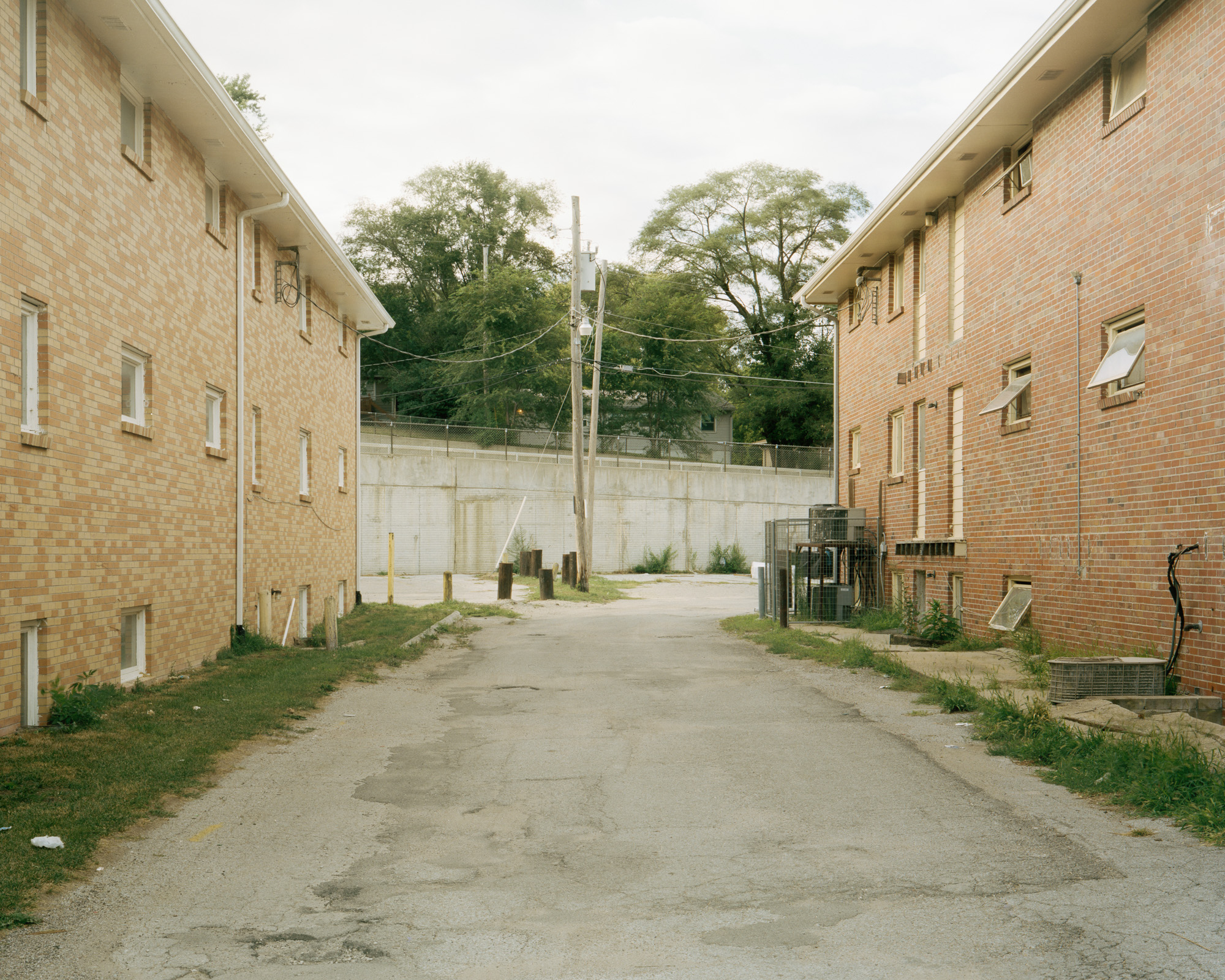


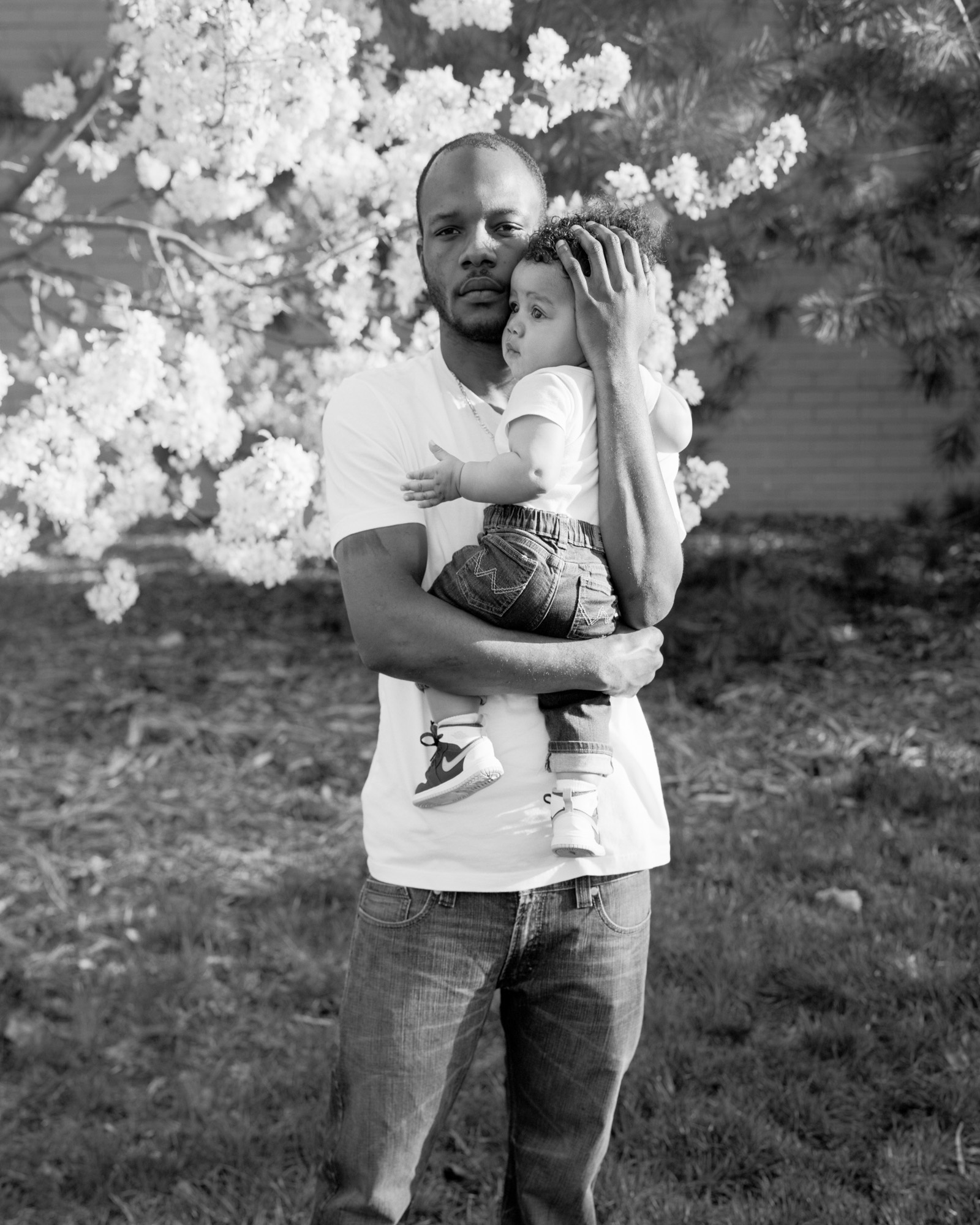
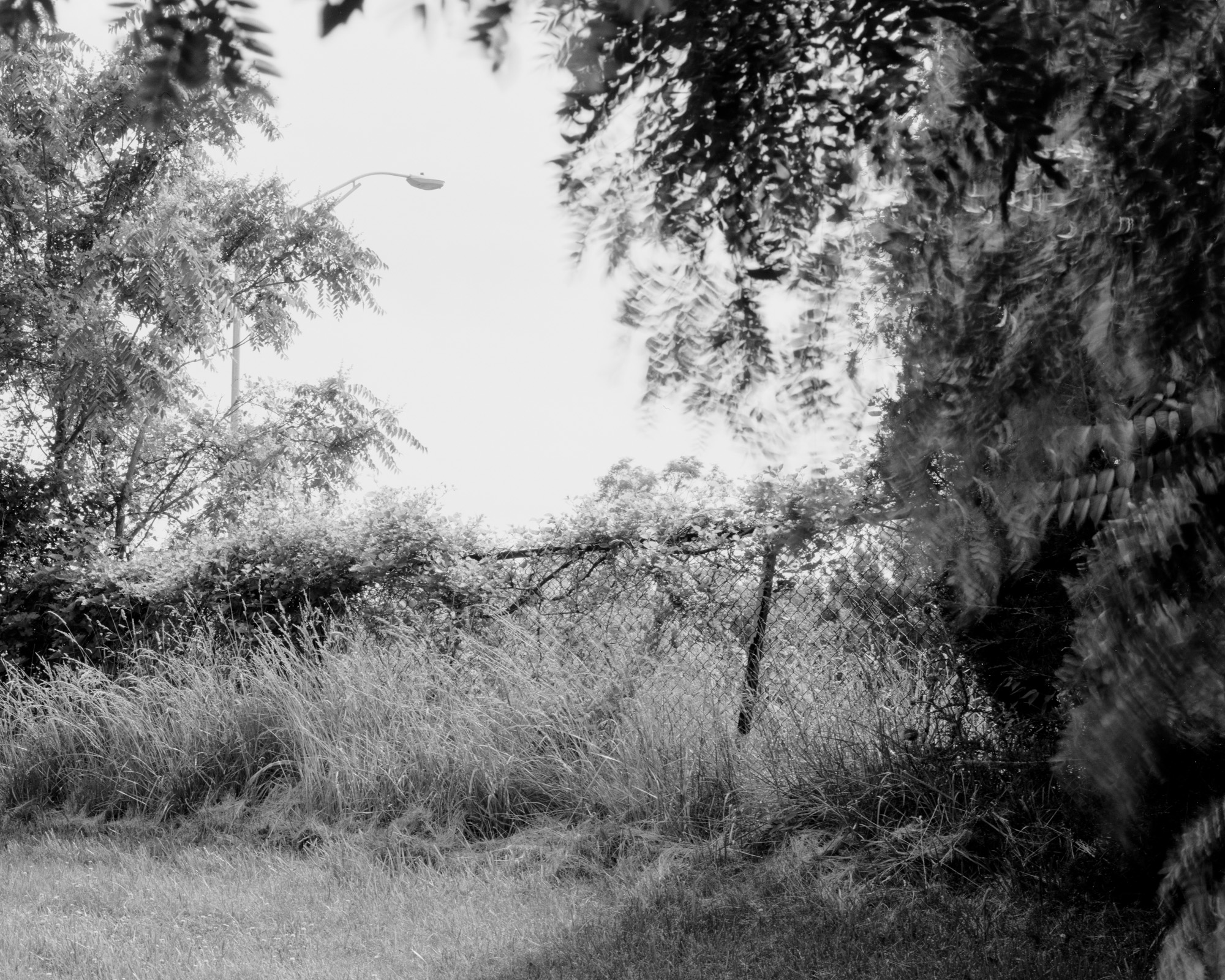
Zora J Murff, A Point (2); A Point (3); Terri (talking about the freeway); Jerrod and Junior (talking about fatherhood); A settling of minerals, history, and hurt (1)
TW Yeah, when I was researching lynchings and perhaps especially the circulation of the
photographs, it seemed to me that the perpetration of any offense was almost secondary to getting
away with it. The impunity was the point. The postcards spread around both participation and
impunity. Someone who possessed one got to identify himself with the perpetrators, but no one with
any legal power was able, or willing, to use that identification to hold anyone accountable. Yet at the
very same time, with the same images, people like Ida B. Wells were able to shame white people into
holding other white people accountable. With these things in mind — the lynching photograph as a
place for both cementing whiteness and holding it up to the light — and with the persistence of
white supremacy now, I have to ask: what is the new lynching photograph?
ZJM Lynchings were a common practice in the antebellum American South and persisted into the Jim Crow era. These were once murders that would happen in the cover of night, the men who committed the crimes shielding their identities. We, of course, know that would eventually evolve into groups of white people hanging Black individuals in public spaces. I put forth footage of police violence as one of the two most significant analogies that we have to photographs of spectacle lynching, precisely because of the trajectory in the visibility of that type of violence.
I think about the video of Rodney King. How before March 3rd, 1991, when George Holliday would record King’s beating, that those eight minutes and 56 blows were reserved only for Black communities to be intimately familiar with. I think about the photographs of Michael Brown’s body left out in the summer sun for all of those on Canfield Drive — and then the world — to see. The image that, as Ferguson committeewoman Patricia Bynes put it, “[the act] sent the message from law enforcement that ‘we can do this to you any day, any time, in broad daylight, and there’s nothing you can do about it.’” I think about the declining of bringing charges by the grand jury in 2014, the acquittals in 1991, the lack of legal recourse in 1919; those actions that have told us and continue to say to us that in the United States of America Black life is less valuable than white.
ZJM Lynchings were a common practice in the antebellum American South and persisted into the Jim Crow era. These were once murders that would happen in the cover of night, the men who committed the crimes shielding their identities. We, of course, know that would eventually evolve into groups of white people hanging Black individuals in public spaces. I put forth footage of police violence as one of the two most significant analogies that we have to photographs of spectacle lynching, precisely because of the trajectory in the visibility of that type of violence.
I think about the video of Rodney King. How before March 3rd, 1991, when George Holliday would record King’s beating, that those eight minutes and 56 blows were reserved only for Black communities to be intimately familiar with. I think about the photographs of Michael Brown’s body left out in the summer sun for all of those on Canfield Drive — and then the world — to see. The image that, as Ferguson committeewoman Patricia Bynes put it, “[the act] sent the message from law enforcement that ‘we can do this to you any day, any time, in broad daylight, and there’s nothing you can do about it.’” I think about the declining of bringing charges by the grand jury in 2014, the acquittals in 1991, the lack of legal recourse in 1919; those actions that have told us and continue to say to us that in the United States of America Black life is less valuable than white.
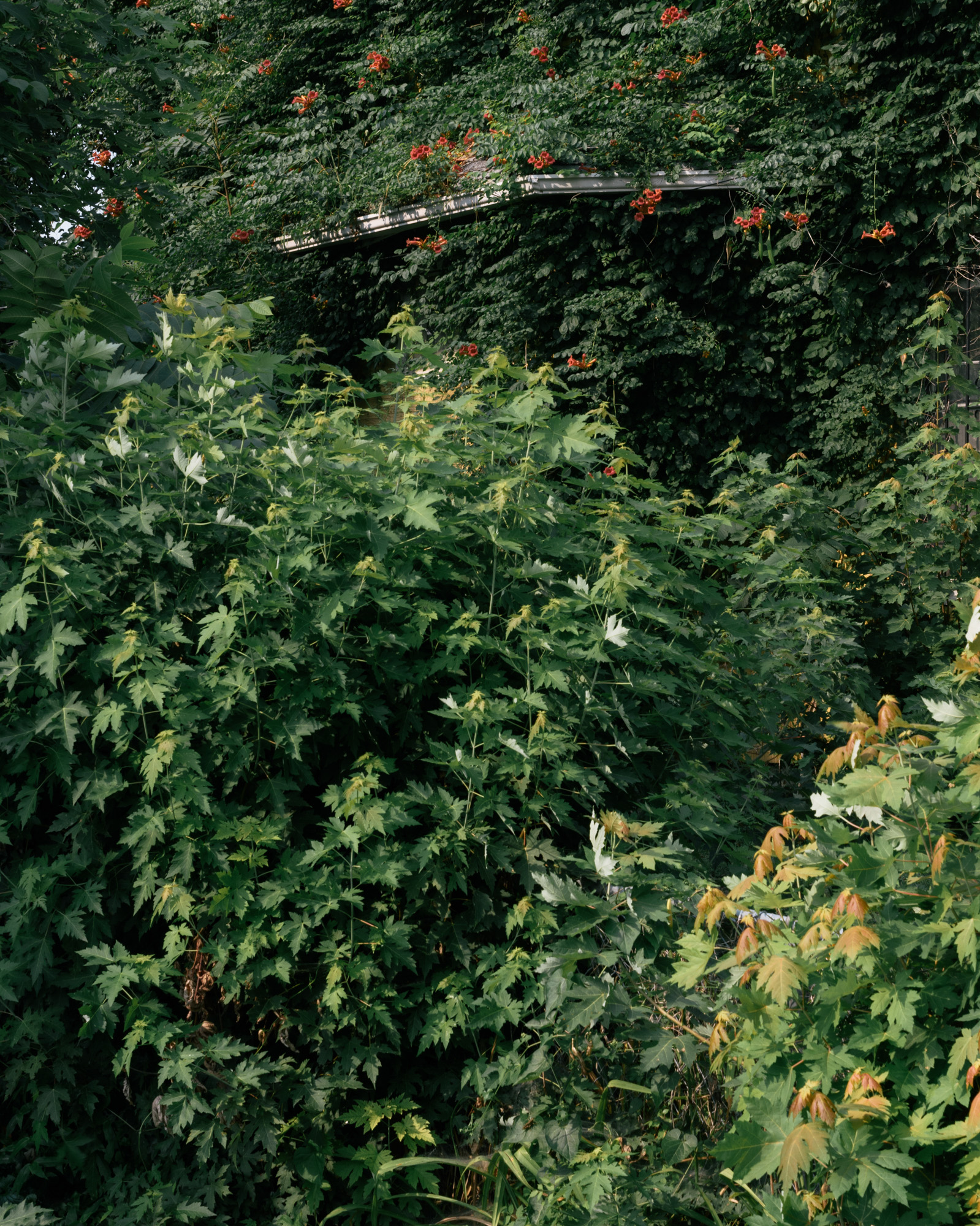

Growth (diptych)
I would argue that one crucial change is how the images are made. Spectacle lynchings became a
ritualized act of collection; individuals would take body parts and pieces of rope as souvenirs. As soon as
photography became wrapped up in that ritual, the resulting images were collected as well, photographers
selling the pictures as postcards. Today, the footage is captured by reporters (those who take the videos)
and by surveillance (body cameras, dash-cams, and CCTV). While there is no ritualized collection, there
is still a ritualistic aspect to it. The killing happens, there’s the public demand for the footage, the footage
is released to the public (if it exists), there may be a trial, and more often than not an acquittal. If we
respond to this kind of footage as a corollary to lynching, one question I have is how does the gaze
(whether of the concerned citizen or passive institutional oversight) change our interaction with this type
of image?
TW Whereas the lynch mob was aided or conveniently ignored by police, now, police officers have the legally protected discretion to shoot when they feel threatened and, in some states, armed citizens also have the right to shoot first and ask questions later. So we’ve gone from abdication by law enforcement officers of their responsibility to prosecute killers to legal sanction of using violent means to “protect” oneself. At any rate, the impunity is and always has been the point, and that’s where the history of lynching comes closest to the present day, at least in my view. But there are a couple of things that are different now. For one thing, the population calling law enforcement into question is much larger and more diverse and has more outlets for their voices than ever. For another, the videos we see now are taken either passively, through automated surveillance, or, when active, recordings are made with an activist slant, wherein cops are themselves being surveilled by citizens; both of these aim to record fact for accountability purposes, which is the opposite of what they used to do.
ZJM I feel like that is where that water starts to cloud, right? And I think that’s one of the reasons I was so drawn to the Laquan McDonald case, because of its complications when it comes to perceived threat, power, and proof.
TW These things get broken down so much in the court of public opinion that it sometimes feels like the only fact we have left is that someone is dead forever. All the stuff that happens in police reports and at trial is about how we place that fact into someone’s hands. I remember reading the original New York Times article about the New York City Transit Police’s 1987 killing of Michael Stewart and getting angry, tearfully angry. The article was full of passive voice and these mealy prepositional phrases — anything to keep the cops from sounding at all responsible, as if Stewart had somehow beaten himself into a coma. It was like the paper was killing him again by disrespecting him that way. One of the things I appreciate about the book is your use of the Walter Scott image because, for one, you use a still, which has him still alive and running. Splitting him from Michael Slager almost saves him, at least until we close the book. It strikes me as a responsible way of thinking about a killing without reproducing the image of it. How do you get past the representation of such violent images?
ZJM There was a moment when I first split the images, and I thought about Scott running unencumbered by the other half. It made me feel hopeful about the interventions in the book that even though it’s a heavy subject, that the more profound things I’m trying to access are necessary. I was abstracting the archival imagery, radically: both as the thing itself and something more; both in and out of time. You touch on in your writing, To Wreck A Structure,
The dash-cam footage from the murder of Laquan McDonald was the first time that I had decided to watch that type of video all the way through. It was jarring, and I felt an intense fear as a result. I brought that same question to all of the other materials, "how does this make me feel, and how do I use context to encapsulate those feelings?"
TW Whereas the lynch mob was aided or conveniently ignored by police, now, police officers have the legally protected discretion to shoot when they feel threatened and, in some states, armed citizens also have the right to shoot first and ask questions later. So we’ve gone from abdication by law enforcement officers of their responsibility to prosecute killers to legal sanction of using violent means to “protect” oneself. At any rate, the impunity is and always has been the point, and that’s where the history of lynching comes closest to the present day, at least in my view. But there are a couple of things that are different now. For one thing, the population calling law enforcement into question is much larger and more diverse and has more outlets for their voices than ever. For another, the videos we see now are taken either passively, through automated surveillance, or, when active, recordings are made with an activist slant, wherein cops are themselves being surveilled by citizens; both of these aim to record fact for accountability purposes, which is the opposite of what they used to do.
ZJM I feel like that is where that water starts to cloud, right? And I think that’s one of the reasons I was so drawn to the Laquan McDonald case, because of its complications when it comes to perceived threat, power, and proof.
TW These things get broken down so much in the court of public opinion that it sometimes feels like the only fact we have left is that someone is dead forever. All the stuff that happens in police reports and at trial is about how we place that fact into someone’s hands. I remember reading the original New York Times article about the New York City Transit Police’s 1987 killing of Michael Stewart and getting angry, tearfully angry. The article was full of passive voice and these mealy prepositional phrases — anything to keep the cops from sounding at all responsible, as if Stewart had somehow beaten himself into a coma. It was like the paper was killing him again by disrespecting him that way. One of the things I appreciate about the book is your use of the Walter Scott image because, for one, you use a still, which has him still alive and running. Splitting him from Michael Slager almost saves him, at least until we close the book. It strikes me as a responsible way of thinking about a killing without reproducing the image of it. How do you get past the representation of such violent images?
ZJM There was a moment when I first split the images, and I thought about Scott running unencumbered by the other half. It made me feel hopeful about the interventions in the book that even though it’s a heavy subject, that the more profound things I’m trying to access are necessary. I was abstracting the archival imagery, radically: both as the thing itself and something more; both in and out of time. You touch on in your writing, To Wreck A Structure,
…when there isn’t a radical living or dead who never said I; when there may not be one who never spoke, even though to speak, to think, is to be in time and to be in time is to crumble: the most radical thing is to choose time and its distension, to choose the question of the self and its profusion, to choose the problem and possibility of connection…
The dash-cam footage from the murder of Laquan McDonald was the first time that I had decided to watch that type of video all the way through. It was jarring, and I felt an intense fear as a result. I brought that same question to all of the other materials, "how does this make me feel, and how do I use context to encapsulate those feelings?"


All our eclipses bright (Vivian) All our eclipses bright (Will)
The clearest example of this is the appearance of stills from the murder of Walter Scott and the murder of
Laquan McDonald. One of the first images you encounter is half of the video-still that shows Walter Scott
running from Michael Slager. About halfway through the sequence, you see a video-still of McDonald
right before his encounter with Jason Van Dyke. One of the last images you see is the other half of the
Walter Scott still that shows Slager with his gun raised. These images are meant to keep the reader
grounded in reality. I didn't want this work to escape or transcend the real, and the work overall is a
stretching or — in your words, distension — of multiple timelines.
If we consider the lynching of Will Brown as a starting point and my photographs of North Omaha as an endpoint, we're looking at a period of 100 years. If we consider the timeline of the Walter Scott video, we're talking about a period of three minutes and twelve seconds. By splitting that image, I'm presenting a 100-year history that unfolds inside of that three minutes. To see that deep-rooted history that is inherent in images is to tap into a deeper social consciousness; to see the many crises we face/have faced (police violence, redlining, lynching), and implicate those who have created and uphold that state of being.
If we consider the lynching of Will Brown as a starting point and my photographs of North Omaha as an endpoint, we're looking at a period of 100 years. If we consider the timeline of the Walter Scott video, we're talking about a period of three minutes and twelve seconds. By splitting that image, I'm presenting a 100-year history that unfolds inside of that three minutes. To see that deep-rooted history that is inherent in images is to tap into a deeper social consciousness; to see the many crises we face/have faced (police violence, redlining, lynching), and implicate those who have created and uphold that state of being.

Survey
In your list of questions, you asked about having multiple timelines at once dramatizing something about
the world, or white supremacy. I don't mean to steal it, but how do you think the work interacts with those
ideas?
TW I would hope that representing the coincidence of multiple timelines undermines hegemony in some way. By showing the coexistence of multiple realities or perspectives, you make a subject out of that coexistence and its nature rather than out of any single perspective. And once you can point to a reality as one of many, you’ve got your crowbar under it. That’s one of the things I think the book does well, and something I aimed for in my writing for it. Your arrangement of the photographs opens up that Walter Scott moment and asks us to see the shooting as a manifestation of something bigger than both Scott and Slager, something into which they were born, something that is and isn’t about them as individuals, though, of course, Scott didn’t and doesn’t have the luxury of individualism that Slager did. I hoped in writing about how to break a structure to stage a fight among different perspectives for your recognition.
ZJM Speaking of your writing, I’ve been curious about your construction of the piece. I intentionally gave you a lot of liberty because I wanted a genuine read on the work for better or for worse. The first time I read through it, I was excited because it felt like you were inside of my head, that you saw the things I saw while I was making and conceptualizing the work. What was that process like?
TW I started off thinking about how to get a reader to jump out of their frame of reference into that of, say, Walter Scott. Or of literally the Walter Scott image you have in the book. Or the book itself. I wanted to have the act of reading reanimate Scott in a way. One of those ideas turned into the next and so on until I felt like I had come to a new understanding of what you’re doing with time in the book, and that opened something up for me. I also tried to misunderstand the word “structure” from the title of the pamphlet, or to see how far I could take the idea of “wrecking a structure.” Instead of doing something more straightforward by writing directly about your photographs, I think I picked up a mood from sitting with the photos for a while and tried to convey that.
And I was really moved by that choice you made to open up the 3-minute Walter Scott video to reveal 100 years of history. It made me think of time differently in my writing, and I found myself trying to slow people down or speed them up with line breaks. The idea of a time inside another time brought me to funk music — which was built around emphasizing the beats that were traditionally de-emphasized — so you see some of that in the text. I was thinking that in an anti-Black world, maybe living as Black wrecks the structure. “Let my very being tear the roof off that motherfucker,” you know? Maybe I still contribute to the demise of the structure by living well in the time I have. Still, a particularly devastating question stuck with me through all the drafts, and I wonder how your work gets at it: “what is an individual in this structural context?” What does it mean to say “I” at all, and how do our concepts of our selves figure into what we do to wreck structures? How does your work point toward an answer?
ZJM I like that you ask how the work points toward an answer rather than how it provides solutions. I lectured quite a bit last year, and a common question I received was, “What do we do?” At a lecture that I gave earlier this summer in Fort Collins, CO, an audience member asked something to the effect, “We invite artists of color to come speak, but as you can tell we don’t have a lot of people of color who show up to these events.”
The room was full of white people, maybe 2-3 people of color, including myself. I responded by saying, “That question isn’t for me, it’s for you and the other people in this room. I can’t and won’t pretend to have an answer to that question. Are all of you asking that of each other? How does this community make these spaces more equitable?”
TW I would hope that representing the coincidence of multiple timelines undermines hegemony in some way. By showing the coexistence of multiple realities or perspectives, you make a subject out of that coexistence and its nature rather than out of any single perspective. And once you can point to a reality as one of many, you’ve got your crowbar under it. That’s one of the things I think the book does well, and something I aimed for in my writing for it. Your arrangement of the photographs opens up that Walter Scott moment and asks us to see the shooting as a manifestation of something bigger than both Scott and Slager, something into which they were born, something that is and isn’t about them as individuals, though, of course, Scott didn’t and doesn’t have the luxury of individualism that Slager did. I hoped in writing about how to break a structure to stage a fight among different perspectives for your recognition.
ZJM Speaking of your writing, I’ve been curious about your construction of the piece. I intentionally gave you a lot of liberty because I wanted a genuine read on the work for better or for worse. The first time I read through it, I was excited because it felt like you were inside of my head, that you saw the things I saw while I was making and conceptualizing the work. What was that process like?
TW I started off thinking about how to get a reader to jump out of their frame of reference into that of, say, Walter Scott. Or of literally the Walter Scott image you have in the book. Or the book itself. I wanted to have the act of reading reanimate Scott in a way. One of those ideas turned into the next and so on until I felt like I had come to a new understanding of what you’re doing with time in the book, and that opened something up for me. I also tried to misunderstand the word “structure” from the title of the pamphlet, or to see how far I could take the idea of “wrecking a structure.” Instead of doing something more straightforward by writing directly about your photographs, I think I picked up a mood from sitting with the photos for a while and tried to convey that.
And I was really moved by that choice you made to open up the 3-minute Walter Scott video to reveal 100 years of history. It made me think of time differently in my writing, and I found myself trying to slow people down or speed them up with line breaks. The idea of a time inside another time brought me to funk music — which was built around emphasizing the beats that were traditionally de-emphasized — so you see some of that in the text. I was thinking that in an anti-Black world, maybe living as Black wrecks the structure. “Let my very being tear the roof off that motherfucker,” you know? Maybe I still contribute to the demise of the structure by living well in the time I have. Still, a particularly devastating question stuck with me through all the drafts, and I wonder how your work gets at it: “what is an individual in this structural context?” What does it mean to say “I” at all, and how do our concepts of our selves figure into what we do to wreck structures? How does your work point toward an answer?
ZJM I like that you ask how the work points toward an answer rather than how it provides solutions. I lectured quite a bit last year, and a common question I received was, “What do we do?” At a lecture that I gave earlier this summer in Fort Collins, CO, an audience member asked something to the effect, “We invite artists of color to come speak, but as you can tell we don’t have a lot of people of color who show up to these events.”
The room was full of white people, maybe 2-3 people of color, including myself. I responded by saying, “That question isn’t for me, it’s for you and the other people in this room. I can’t and won’t pretend to have an answer to that question. Are all of you asking that of each other? How does this community make these spaces more equitable?”


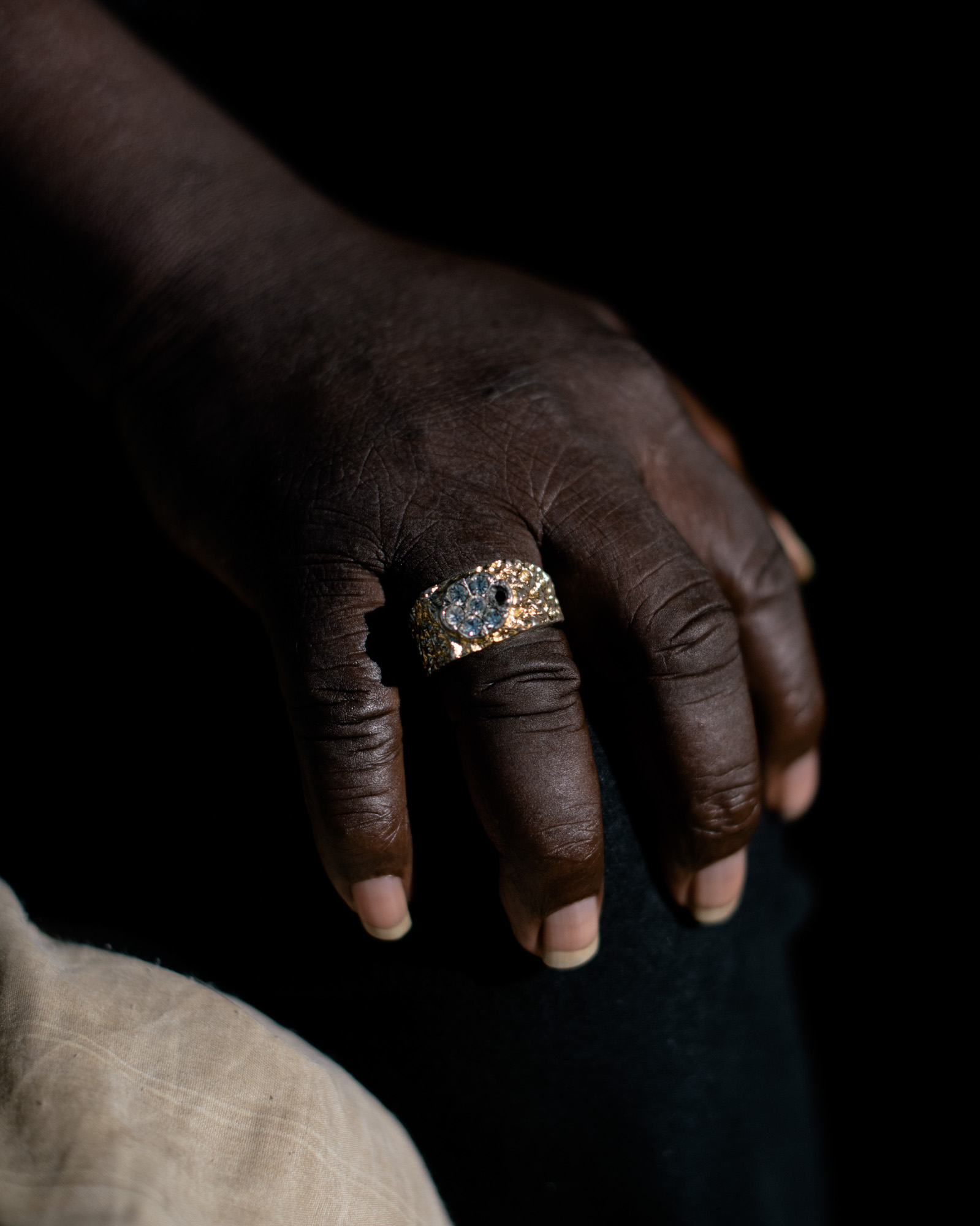
Zora J Murff, Aftermath; Freddy (talking about his home); King
This work was an emotional response to things that I saw; art became the conduit that I chose to exorcise
those feelings.
I think that saying the work should accomplish one thing or another is to do it a disservice.
Instead, I believe in the work’s potential. One hope that I have for the work is that it acts as a mirror. Lisa
captures this well in her afterword, referring to the lynching photograph of Will Brown,
To see or feel yourself in this work on any level is to say, “I,” an acknowledgment of oneself inside of this structural context. To be self-aware is to wield power and orient oneself towards an answer.
TW That rings true to me for sure, and I wonder whether acknowledgement of our identities’ construction is itself a way out. Lisa doesn’t see herself in the crowd at the Will Brown lynching, but she recognizes that failure as a privilege afforded by her being white in this country. Lisa “can write around” the connection between her and the people in that crowd, “can convince” herself that the connection is nonexistent rather than invisibilized. But she doesn’t. She undoes the particular innocence of American whiteness by naming it. She undoes herself by laying bare the strategies she might have used to shore up her individuality. And when she makes the choice not to separate herself from that lynching crowd, she holds herself accountable for the effect of whiteness now. Self-awareness makes true choice and accountability possible.
What Lisa’s talking about is the kind of work you asked those people in Fort Collins to do. When institutions say “we invite them but they don’t come,” the framework is already inadequate. Don’t just invite people into your space; break down the socio-political barriers that make it possible to define “your” space versus “theirs.” I don’t always know what that looks like, though. There’s that section about people getting the vote “in 1870 and 2025,” which I meant to be some sort of radical, “give non-citizens a vote” thing after reading an article on the subject. Then it hit me that it might not be very radical at all...it almost sounds patriotic, based in a belief in democracy as we already know it. And I don’t know if that’s enough — why should my model for an inclusive country be so...American? To what degree is citizenship part of who I am? Is this something you think about generally, or while making work?
I ask myself what it takes to perpetrate a casual act of photography amid the smell of burning flesh. But I do not ask why I do not see myself among the faces in the crowd. I could come up with reasons other than the truth, which is that because they are white and I am white, I can convince myself our stories are not conjoined. I can write around it. I know that is a failure of sight…In the beginning, you and I were born into this place. Ours is a country that would force you to see your outlines in the body of a boy shot to death on Chicago’s Southwest side, and absolve me from recognizing mine in the lyncher’s smile.
To see or feel yourself in this work on any level is to say, “I,” an acknowledgment of oneself inside of this structural context. To be self-aware is to wield power and orient oneself towards an answer.
TW That rings true to me for sure, and I wonder whether acknowledgement of our identities’ construction is itself a way out. Lisa doesn’t see herself in the crowd at the Will Brown lynching, but she recognizes that failure as a privilege afforded by her being white in this country. Lisa “can write around” the connection between her and the people in that crowd, “can convince” herself that the connection is nonexistent rather than invisibilized. But she doesn’t. She undoes the particular innocence of American whiteness by naming it. She undoes herself by laying bare the strategies she might have used to shore up her individuality. And when she makes the choice not to separate herself from that lynching crowd, she holds herself accountable for the effect of whiteness now. Self-awareness makes true choice and accountability possible.
What Lisa’s talking about is the kind of work you asked those people in Fort Collins to do. When institutions say “we invite them but they don’t come,” the framework is already inadequate. Don’t just invite people into your space; break down the socio-political barriers that make it possible to define “your” space versus “theirs.” I don’t always know what that looks like, though. There’s that section about people getting the vote “in 1870 and 2025,” which I meant to be some sort of radical, “give non-citizens a vote” thing after reading an article on the subject. Then it hit me that it might not be very radical at all...it almost sounds patriotic, based in a belief in democracy as we already know it. And I don’t know if that’s enough — why should my model for an inclusive country be so...American? To what degree is citizenship part of who I am? Is this something you think about generally, or while making work?


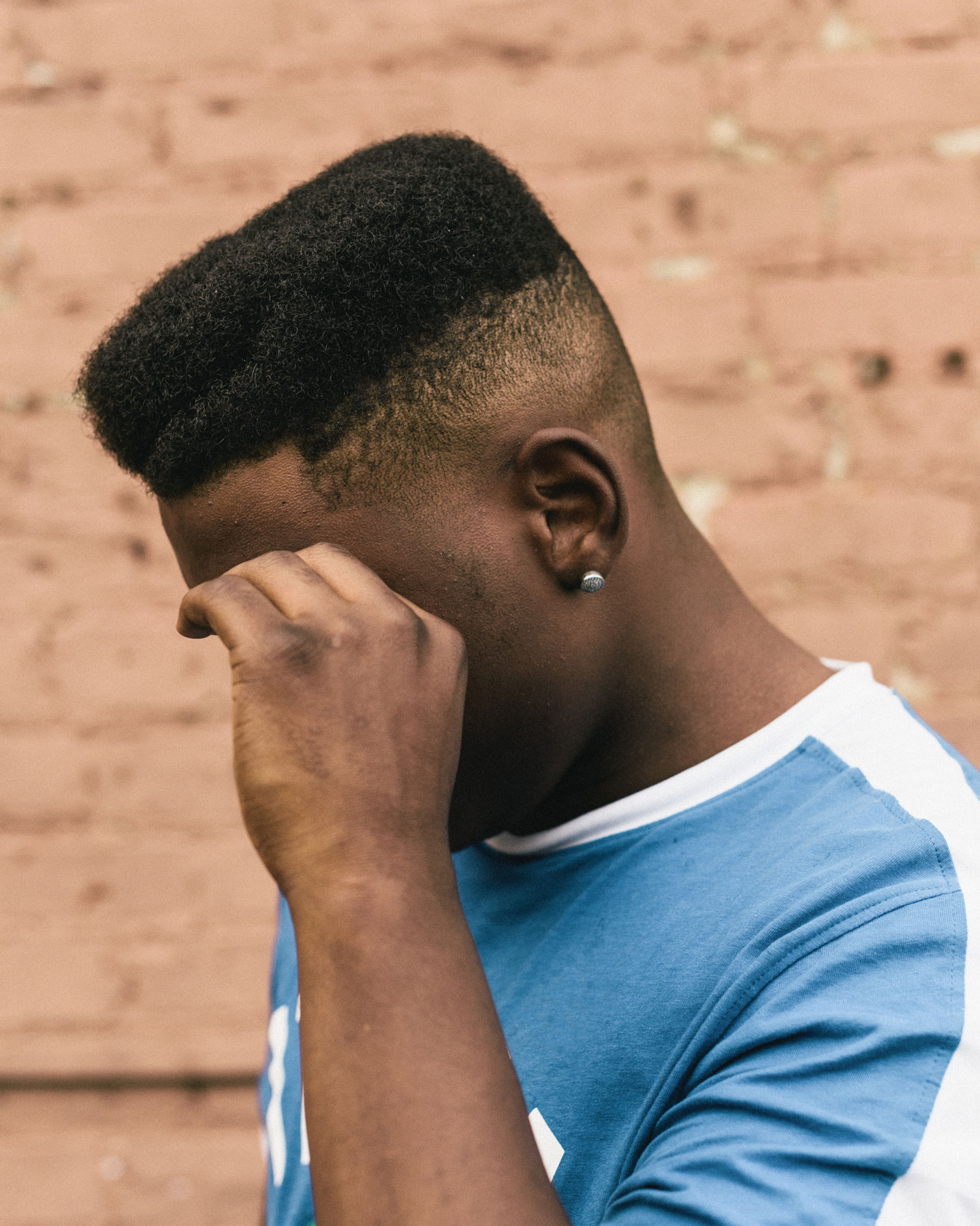
Zora J Murff, Jhalisa (talking about America); Beacon; Chris (talking about fear)
ZJM While I was making the project, I was asked on more than one occasion if I felt that I had to make
this work because I was Black, that it wasn’t my responsibility to make it. There were so many different
and overwhelming emotions from that question, but mostly I was pissed. The people asking me were
white, and I was angry because I now had to question if they felt a need or desire to try and provide me
with some absolution or if maybe they were trying to test the integrity of my intentions.
After sitting with it, I realized that no one had ever asked them if they felt the need to make their work because they were white. I began dreaming of a way to pose my response, one that challenges the perceived necessity of the question asked of me. The result was the work. That isn’t to say that this is a foundation of the work, but rather an irrefutable part of it because this is something I was contending with while I was making it. If we are speaking broadly, this dream isn’t very radical at all, but given the space that I was in, it was. I hope that I left that space better equipped to think more radically than it once had, that someone else in the future doesn’t have to ask themselves the questions I had to. Maybe I’m putting forth dreaming as a continuum.
TW “Dreaming as a continuum”...as in, your dream might create the reality upon which the dreams of the people after you might be built, or from which they might depart. In a way, that frame is kind of a validation of the idea that the United States itself is an idea — that we’ll never be done. The union will never be perfect, and justice is never an event, but a process...but maybe striving toward something better is what this whole experiment is. Yet it’s interesting — you make work about the present and the past. Or how the past is in the present. For so long it was, you know, a house and a car and a steady job and a happy family, but in this totally individualistic and ahistorical way, as if everyone was supposed to build that out of nothing. Now, it’s clearer every day how much the wealth of our parents and their parents determines our futures, and how the roots of some of that wealth run into the deep, dark past of this country. What does it mean to dream of a reckoning with the past? How do you think of the American Dream then?
ZM This makes me think about Nikole Hannah-Jones’ exacting opening essay of the 1619 Project which points at crucial moments where the “American Dream” was bent to the will of whiteness. One thing that stuck out was her reflection on how she was once confounded by her father’s display of an American flag outside of their home, but comes to the following conclusion:
We were once forced to sweat and bleed and die for this county, to set the cornerstone and put up the walls. We dreamt of a time when that would no longer be the case. We then sweat and bled and died, turning hammers against what we were forced to build, continuing to dream all the while. When we last spoke on the phone, I was caught up in this sort of fatalism. I was thinking of our dreaming as stunted or truncated because at every turn, there has always been someone’s boot on our necks. I was weighing Black freedom against white privilege. But that has never been the answer. When I close my eyes and dream, I do not see, but rather feel. It is a sensation that is hard to put into words.
I, too, will sweat and bleed and die and dream, hammering harder until the structure comes down.
After sitting with it, I realized that no one had ever asked them if they felt the need to make their work because they were white. I began dreaming of a way to pose my response, one that challenges the perceived necessity of the question asked of me. The result was the work. That isn’t to say that this is a foundation of the work, but rather an irrefutable part of it because this is something I was contending with while I was making it. If we are speaking broadly, this dream isn’t very radical at all, but given the space that I was in, it was. I hope that I left that space better equipped to think more radically than it once had, that someone else in the future doesn’t have to ask themselves the questions I had to. Maybe I’m putting forth dreaming as a continuum.
TW “Dreaming as a continuum”...as in, your dream might create the reality upon which the dreams of the people after you might be built, or from which they might depart. In a way, that frame is kind of a validation of the idea that the United States itself is an idea — that we’ll never be done. The union will never be perfect, and justice is never an event, but a process...but maybe striving toward something better is what this whole experiment is. Yet it’s interesting — you make work about the present and the past. Or how the past is in the present. For so long it was, you know, a house and a car and a steady job and a happy family, but in this totally individualistic and ahistorical way, as if everyone was supposed to build that out of nothing. Now, it’s clearer every day how much the wealth of our parents and their parents determines our futures, and how the roots of some of that wealth run into the deep, dark past of this country. What does it mean to dream of a reckoning with the past? How do you think of the American Dream then?
ZM This makes me think about Nikole Hannah-Jones’ exacting opening essay of the 1619 Project which points at crucial moments where the “American Dream” was bent to the will of whiteness. One thing that stuck out was her reflection on how she was once confounded by her father’s display of an American flag outside of their home, but comes to the following conclusion:
My father knew exactly what he was doing when he raised that flag. He knew that our people’s contributions to building the richest and most powerful nation in the world were indelible, that the United States simply would not exist without us…Without the idealistic, strenuous, and patriotic efforts of black Americans, our democracy today would most likely look very different — it might not be a democracy at all.
We were once forced to sweat and bleed and die for this county, to set the cornerstone and put up the walls. We dreamt of a time when that would no longer be the case. We then sweat and bled and died, turning hammers against what we were forced to build, continuing to dream all the while. When we last spoke on the phone, I was caught up in this sort of fatalism. I was thinking of our dreaming as stunted or truncated because at every turn, there has always been someone’s boot on our necks. I was weighing Black freedom against white privilege. But that has never been the answer. When I close my eyes and dream, I do not see, but rather feel. It is a sensation that is hard to put into words.
I, too, will sweat and bleed and die and dream, hammering harder until the structure comes down.
︎